| SHADOWS ON THE WALL | REVIEWS | NEWS | FESTIVAL | AWARDS | Q&A | ABOUT | TALKBACK | |||||
 Shadows off the beaten path Shadows off the beaten pathIndies, foreign, docs and shorts...
On this page:
BIG FUR |
DESERT ONE |
SKIN: A HISTORY OF NUDITY IN THE MOVIES
| |||||
| See also: SHADOWS FILM FESTIVAL | Last update 19.Aug.20 | |||||
|
Big Fur Review by Rich Cline | 
| |||||
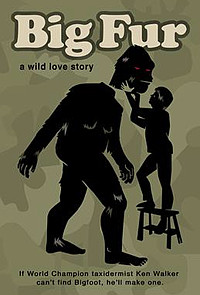 dir Dan Wayne scr George Langworthy prd Dan Wayne, Jon Niccum with Ken Walker, Colette Walker, Amy Carter, Chantelle Walker, Patrick Walker, Jim Walker, Robert Pyle, George Roof, Larry Blomquist, Antonio Alfero, Dawne L'Hirondelle, Mike Judd release US 14.Aug.20 19/US 1h17 Now streaming... |
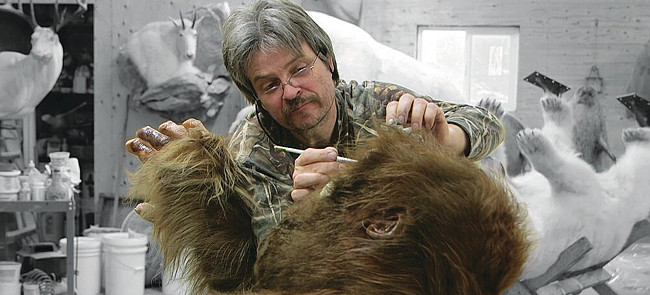 With tongue firmly in cheek, this narrative documentary finds both absurd humour and serious artistry in posing dead animals for a living. The story unfolds in a relaxed way, pulling the audience in with grounded humour and people who are simply being themselves. And what's surprising is that this chronicle about creating a realistic life-size bigfoot is entertaining on a variety of surprising layers. Including an unexpected love story. In Alberta, the unassuming Ken Walker is a world champion taxidermist who loves creating animals that look vibrantly alive. As he prepares for this year's championship, he decides to recreate a female sasquatch based on the now-iconic 1967 home movie. This requires working in reverse, first deciding on a pose and sculpting a foam model based on careful calculations, then finding the fur to wrap it. And the level of detail is astounding, from expressive eyes to craggy fingernails. The doc includes witty animation, including a superb claymation sequence that echoes Walker's own childhood work in stop-motion animation before he became obsessed with roadkill. He even reveals a story he wrote about bigfoot as a little boy. Walker's wife and kids are interviewed, as are a wide range of colleagues. And there's a terrific collection of home videos and snapshots that reveal crazy aspects of his personality, as well as the toll his career has taken on his marriage. He also proves to be gifted at Roy Orbison karaoke. Wildlife anatomy has been preserved for thousands of years, and the film outlines the evolution of Walker's profession from cave drawings onward. It also explores his remarkable knowledge of anatomy. And this isn't the first time he has recreated an animal that doesn't exist anymore, as previous prize-winning projects include a sabre-tooth tiger and an Irish elk, plus his first championship win with a hyper-realistic giant panda. Everyone agrees that Walker has an extraordinary eye for creating animals that seem to be alive. This is fiendishly enjoyable documentary that, with several amusing touches, takes the viewer on a tour of an elaborate subculture that has been on the wrong end of stereotyping. Along the way it explores how the urban-rural divide threatens the wilderness. And it also digs in to the myth of the sasquatch, including fossil records, first-hand accounts (there have been some 3,500 reported sightings), and the prized bag of bigfoot scat Walker guards in his freezer. Indeed, it's Walker's passion for life that wins us over.
| ||||
|
Desert One Review by Rich Cline |  MUST
MUST  SEE SEE
| |||||
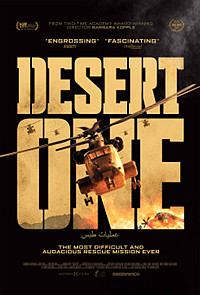 dir Barbara Kopple scr Francisco Bello prd Barbara Kopple, David Cassidy, Eric Forman with Jimmy Carter, Walter Mondale, Ted Koppel, John Limbert, Kevin Hermening, Michael Metrinko, James Q Roberts, Ed Seiffert, Hossein Sheikholeslam, Faizeh Moslehi, Mahmoud Abedini, Mohammad Tabasi release US 21.Aug.20 19/US 1h47 TORONTO FILM FEST Now streaming... |
 In April 1980, in the middle of the Tehran hostage situation, US forces launched a desperate rescue mission. Documentarian Barbara Kopple takes a forensic approach to the event, interviewing people and collecting visual records to piece together firsthand accounts from every side of the story. It's a staggeringly thorough, riveting account of exactly what happened during this ill-fated mission, as well as those tense 444 days of captivity. The film provides a clear outline tracing American policy in Iran during the years following the US-staged coup in 1953, which established and upheld the brutal dictatorship of the Shah. In the late 1970s, public resentment of the Shah finally boiled over into street protests, leading to the February 1979 revolution, after which the Ayatollah took power. So when the US gave the Shah refuge, the Iranian people heard a declaration of war. Student protesters swarmed the US embassy that November, taking 52 hostages and demanding the Shah be returned to stand trial. President Carter and his team tried to use diplomacy to resolve the situation peacefully, getting personally involved in negotiations with Iran as well as contact with the hostages' families. He didn't care about making America look strong; he just wanted the Americans returned home safely. Journalist Koppel still criticises this approach as playing a weak hand. And the Delta Force commanders planned an elaborate secret rescue mission, which the team rehearsed in detail. But of course it didn't go to plan, and what went wrong is recounted in nerve-jangling detail. For this doc, each point is backed up by photographs and archival footage, plus some vivid animated recreations, all narrated by the people who were right there, including the hostages, political advisers, rescue team members and the captors themselves, who speak about being students at the time, demanded that US stop interfering in Iran. The also recal that, after making some horrific threats, they began to see the captives as guests and even friends. Meanwhile in the US, a bitter presidential campaign complicated everything. Kopple's approach is so thorough that the film often takes the breath away. The range of interviewees alone makes it worth a look, as they recount personal anecdotes and perceptions. These are augmented by a terrific collection of film and video footage, edited together into an involving chronology. This intensely personal approach, combined with some harrowing unseen footage, gives the film a strong kick of resonance.
| ||||
|
Skin: A History of Nudity in the Movies Review by Rich Cline | 
| |||||
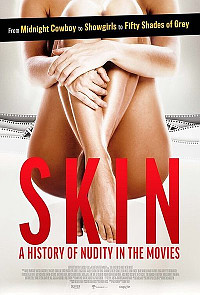 dir Danny Wolf prd Paul Fishbein scr Danny Wolf, Paul Fishbein with Malcolm McDowell, Peter Bogdanovich, Pam Grier, Mariel Hemingway, Joe Dante, Diane Franklin, Erica Gavin, Brinke Stevens, Kristanna Loken, Linda Blair, John Cameron Mitchell, Amy Heckerling release US 21.Aug.20 20/US 2h10 Now streaming... |
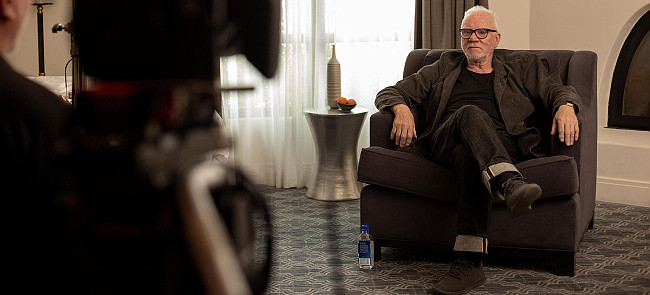 Nude bodies have featured in art since the dawn of time. With a range of mainstream movie clips from the 1880s onwards, this exhaustive documentary takes a straight-faced approach to a titillating topic. It's an eye-popping, eye-opening trip through cinema, digging into important themes even as it's uneven regarding both gender and history. So while the approach is academic, including so many actors adds a badly needed personal perspective. The film is a barrage of reminiscences about experiencing nudity on-screen, as actors, moviemakers, writers and historians. All of this puts cinematic nakedness into context, as it proliferated in the early 1900s before America's censors clamped down in the 30s. Transgressive movies in the 50s and 60s put an end to restrictive US code, fuelled by Hitchcock's Psycho (1960) and happily naked stars like Marilyn Monroe and Jayne Mansfield. The doc focusses on the period from here to the 1990s, then skips the past 20 years, briefly mentioning movies like Zack & Miri Make a Porno and Fifty Shades of Grey. Early on, the filmmakers address the MeToo era, as accusations of sexual harassment have changed how movies are made. And of course the main focus is on the proliferation of female nudity in a male-run industry. For welcome contrast there's Malcolm McDowell, who launched his career just as the nude floodgates opened, and notoriously appeared naked in If... (1967) and A Clockwork Orange (1971), plus of course 1979's Caligula. He points out that European actors have never really worried about being unclothed. Lokken talks about the freedom of acting without clothing, because it's all yourself. Grier laughs about her popular series of women-in-prison movies. Blair speaks of feeling violated by script changes on the set of Chained Heat (1983). But while mainstream actresses like Julie Andrews and Jamie Lee Curtis have done nudity, very few male actors have the nerve. This double standard is touched on, but never unpicked. Which gives the film a distinct male gaze, spending more time to how studios require actresses to get naked but are uncomfortable with naked men. Balancing the male/female clips would easily cut down this film's extended running time. But it takes a remarkably straightforward, educational approach, never winking at the skin on display. The array of people discussing scenes and genres highlights the contrast between integral and gratuitous nudity (Mitchell says it's about empathy). And because it tackles bigger issues, the film becomes properly provocative in what it says both about what audiences want to see and who's making the decisions behind the cameras.
| ||||

See also: SHADOWS FILM FESTIVAL © 2020 by Rich Cline, Shadows
on the Wall
HOME | REVIEWS | NEWS | FESTIVAL | AWARDS
| Q&A | ABOUT | TALKBACK | | ||||

